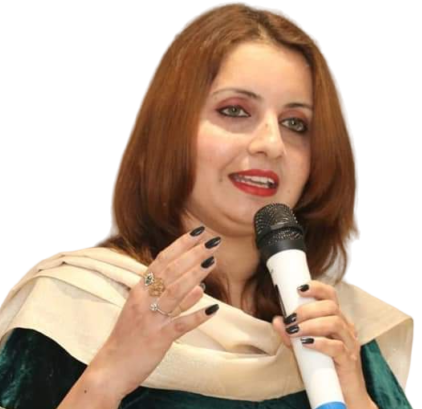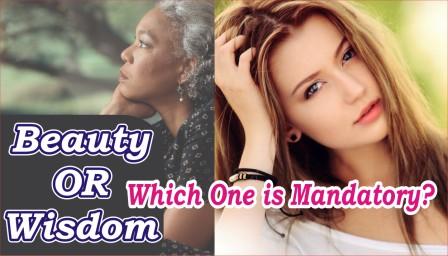“Beauty or Wisdom”
Introduction
- Description of the Topic: “Beauty or Wisdom”
- Importance of beauty and intellect in society
- Review of Discussion Points
II Beauty: Aesthetic appeal
- Appreciation and Perception of Beauty
- Cultural Influences on standards of Beauty
- Effect of physical attractiveness on Personal and professional life
- The Role of beauty in social interactions and Relationships
- Criticisms and limitations of the emphasis on beauty
III Wit: Intellectual and humorous ability
- Definition and Characteristics of Intellect
- The Importance of Reason in Social Interactions
- Wit as a sign of intelligence and creativity
- Humor, entertainment, and the Role of wit in Storytelling
- Criticisms and Limitations of Relying on Reason Alone
IV Beauty vs. Intelligence: A Comparative Analysis
- Balancing the importance of beauty and intellect in different contexts
- Beauty and intellect as complementary or competing attributes
- Concepts of Beauty and Wisdom in Different Cultures and Historical Periods
- The effect of beauty and intelligence on personal happiness and fulfillment
- Examples of persons who excel in beauty or intellect.
- Conclusion
- Summary of key points discussed
- Recognition of the subjective nature of beauty and intellect
- Encouragement to value both beauty and intellect in a balanced way
- Final thoughts on the importance of beauty and intellect in society.
“Beauty or Wisdom”
The Article

Introduction:
1. Description of the Topic: “Beauty or Wisdom”
The theme “Beauty or Intelligence” explores the importance of physical attractiveness (beauty) and intellectual humor (intellect) in society. It examines the impact of these attributes on personal relationships, professional success, and overall well-being.
2. Importance of beauty and intellect in society
Both beauty and intelligence are valued in society, although their importance may vary depending on cultural and individual preferences. Physical attractiveness is often associated with positive traits such as confidence, attractiveness, and social desirability. Intelligence, on the other hand, is seen as intelligence, quick thinking, and the ability to entertain and engage others.
3. Review of Discussion Points
The outline will explore definitions, cultural influences, social influences, criticism, and comparisons of beauty and intellect. It will also touch on their importance in different contexts and cultures, and provide examples to illustrate the points discussed.
II Beauty: Aesthetic appeal
1. Appreciation and Perception of Beauty
Beauty is a subjective concept that includes physical characteristics, aesthetics, and attractiveness. It varies across cultures and individuals, influenced by factors such as symmetry, proportions, skin color, and other social ideals.
2. Cultural influences on standards of beauty
Cultural norms greatly influence beauty standards. For example, in Western cultures, clear skin, a slim figure, and certain facial features may be considered ideal, while other cultures may prefer different traits. In different geographical areas of the world, e.g. in Africa, the standards of beauty are quite different from those of found in America or Australia. So, it is rightly said that “Beauty lies in the eyes of Beholder.” Thus it is purely a subjective approach of humans.

3. Effect of physical attractiveness on personal and professional life
Research shows that physical attractiveness can affect many aspects of life, including dating, friendships, and opportunities for career advancement. People often attribute positive traits to attractive people, leading to potential advantages in social and professional interactions. As John Keats said, “A Thing of Beauty is a Joy forever”.
4. The role of beauty in social interactions and relationships
Physical attractiveness can influence initial attraction and relationship formation. It can shape people’s perceptions, affect self-esteem, and affect long-term relationship satisfaction.
5. Criticisms and limitations of the emphasis on beauty
An emphasis on beauty can lead to unrealistic standards, body image issues, and discrimination based on appearance. It is important to recognize the diversity of beauty and promote inclusion.
III Wit: Intellectual and humorous ability
1. Definition and Characteristics of Intellect
Wit refers to the ability to think quickly, express ideas cleverly, and create witty or insightful comments. It includes intelligence, creativity, and understanding of language and social context.
2. The Importance of Reason in Social Interactions
Intelligence plays an important role in social interactions by promoting engagement, fun, and harmony with others. It can facilitate communication, diffuse tension, and demonstrate intelligence.
3. Wit as a sign of intelligence and creativity
Wit is often seen as a sign of intelligence and creativity. People with a sharp mind demonstrate mental agility, the ability to make connections, and the ability to present ideas in an interesting and humorous way.
4. Humor, entertainment, and the role of wit in storytelling
Through clever wordplay, puns, satire, and unexpected twists, wit contributes to humor, entertainment, and storytelling. Comedians, writers, and actors often rely on wit to engage audiences and create memorable experiences.
5. Criticisms and Limitations of Relying on Reason Alone
Intellect alone can be perceived as shallow or lacking in depth. An overemphasis on intellect can diminish the importance of empathy, emotional intelligence, and other qualities necessary for meaningful relationships.
IV Beauty vs. Intelligence: A Comparative Analysis
1. Balancing the importance of beauty and intellect in different contexts
The importance of beauty and intelligence varies from context to context. For example, in certain professions such as modeling or acting, physical attractiveness may be more important, while in intellectual or creative fields, intelligence and intellectual ability are more important.
2. Beauty and intellect as complementary or competing attributes
Beauty and intelligence are not mutually exclusive attributes. They can complement each other, enhancing a person’s overall appeal. For example, a person who possesses both physical attractiveness and a sharp intellect can be extremely charismatic and charming.
3. Concepts of Beauty and Wisdom in Different Cultures and Historical Periods
Cultural and historical contexts shape notions of beauty and wisdom. Different cultures may prefer one trait over another, and these views may change over time due to changing social norms and cultural changes.
4. The effect of beauty and intelligence on personal happiness and fulfillment
Personal happiness and fulfillment depend on a variety of factors beyond beauty and intellect. While they can contribute to confidence and positive experiences, other qualities such as kindness, integrity, and personal development also play an important role.
5. Examples of persons who excel in beauty or intellect.
Examples may include celebrities known for their physical attractiveness or individuals known for their wit and intellectual humor, such as actors, comedians, writers, or public figures. For Example, Kapil Shamra of Kapil Shamra Show from India; Aftab Iqbal’s shows in Pakistan, and many more.
Conclusion
1. Summary of key points discussed
A summary of key theories of beauty and intelligence, their definitions, cultural influences, social influences, critiques, and interactions between the two attributes.
2. Recognition of the subjective nature of beauty and intellect
Recognizing that beauty and intelligence are subjective concepts that can vary greatly among individuals and cultures.
3. Encouragement to value both beauty and intellect in a balanced way
Promoting the appreciation of both beauty and intelligence as valuable qualities, emphasizing the importance of embracing diverse perspectives and attributes.
4. Final thoughts on the importance of beauty and intellect in society
Reflecting on how beauty and wisdom contribute to social interactions, personal growth, and the richness of human experience, and recognizing their complex and multifaceted nature.


Very informative article Mam Zartashia.